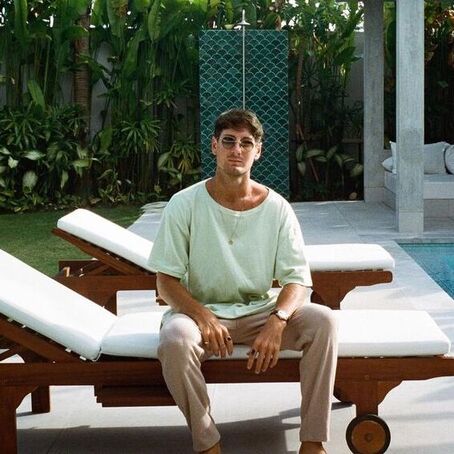The History of the Islamic Sultanate in Java
Sandwiched between Semarang, capital of Central Java to its west, the regency of Jepara to its north, and the regency of Kudus to the east, the town of Demak was the seat of the once-powerful Demak Sultanate, the cradle from where Islam spread throughout the entire island of Java.
According to “The Soil of East-Central Java” written by T.W.G Dames in 1955, approximately 6 centuries ago, the area where now stands the town of Demak was then a coastline facing the Silugangga Channel that separated the main island of Java from the then Muria Island (present-day Jepara and Kudus). Thus, the town was a busy harbor with trade connections to Malacca and the Spice Islands of east Indonesia.
Around the 15th Century, the channel was sufficiently wide and became an important waterway for ships sailing along the northern Javanese coast to the Spice Islands. The channel was also connected to the Serang River, which enabled access to the rice-producing interior of Java. This strategic location enabled Demak to rise as a leading trading center in Java. However, since the 17th century, the channel silted up, shallowed, and eventually vanished completely, thus merging the island of Muria with mainland Java.
The founding of the Demak Sultanate was traditionally attributed to Raden Patah (1475–1518), a Javanese nobleman related to the once-powerful Majapahit king of East Java. At least one account stated that Raden Patah was, in fact, the son of Kertabhumi, who reigned as king Brawijaya V of Majapahit (1468–1478). Demak managed to consolidate its power and defeated Daha in 1527 because it was more widely accepted as the legitimate successor to Majapahit. The reason for this acceptance was because Raden Patah was believed to be a direct descendant of Kertabhumi who survived the invasion by Girindrawardana on Trowulan, capital of Majapahit, in 1478.
With the full support of the Wali Songo or the Nine Apostles of Islam, the Demak Sultanate rose to become the most prominent Islamic kingdom on Java and the center in the spread of Islam in Java.
The symbol of the golden era of the Demak Sultanate and the early spread of Islam in Java still stands today, which is the Masjid Agung Demak or the Great Mosque of Demak.

The Great Mosque of Demak
Built in 1478, the Great Mosque of Demak is believed to be the first mosque in Java and one of the oldest in Indonesia. Constructed collectively by the Wali Songo and Raden Patah as the first ruler of the Demak Sultanate, the mosque holds great significance as it was not merely a place for prayers but at the time was also the center of the sultan’s governance and the venue where the walis (apostles) used to meet to discuss matters.
Although the Mosque has undergone a number of renovations, it is thought to have largely remained in its original form. The mosque is a classic example of the traditional Javanese mosque. Unlike mosques in the Middle East, this one was built of timber without a dome, which only appeared on Indonesian mosques by the 19th century. The tiered roof shows many similarities to the wooden religious structures from the Hindu-Buddhist civilizations on Java and Bali.
The main entrance of the Great Mosque of Demak consists of two doors carved with motifs of plants, vases, crowns and an animal head with a wide-open fanged mouth. It is said that the picture depicts the manifested thunder caught by Ki Ageng Selo, hence their name “Lawang Bledheg” or “the doors of thunder.”

The historical and legendary parts of the mosque are the large four main wooden pillars, called the soko guru, that support the heavy wooden roof of the mosque. With each pillar carved out of single trees with a height reaching 16 meters, the four main pillars are placed according to the four cardinal directions and were set up by members of the Wali Songo. The Northwest Pillar was erected by Sunan Bonang, the Southwest by Sunan Gunung Jati, the South East by Sunan Ampel, and the very exceptional pillar known as Soko Tatal which is constructed from joined pieces of wood scrap and erected on the northeast by Sunan Kalijaga. The original four soko guru were replaced with replicas in 1983 and the originals are now placed in the museum in the mosque compound.

The tomb of Sunan Kalijaga located in the village of Kadilangu approximately 2 kilometers from the Mosque is another legacy from the early Javanese Islamic era frequently visited by visitors and pilgrims. Every year during the “Grebeg Besar” ritual ceremony (which falls on 10 Dzulhijah of the Islamic Calendar) when various heirlooms are ritually cleansed, thousands of visitors and pilgrims flock to Demak to take part in the event.
How to Get There
Demak lies on the main north coast highway – known as Pantura – between Central Java and East Java, connecting Semarang with Surabaya. The town of Demak is only 25 Kilometers or about 30-40 minutes’ drive from Semarang, capital of Central Java. There is also a lot of public transportation available in Semarang or intercity buses that pass through Demak.
How to Get Around
Demak also has a lot of public transportation for you to get around, but we suggest you rent a car or motorcycle for a convenient way to go anywhere you want. Aside from the Great Mosque of Demak and the Tomb of Sunan Kalijaga, there are many other attractions that you must explore. Head to Sayung District and you will find Morosari Beach: a mangrove coastline with unexpectedly stunning scenery, especially at sunset. If you’re looking for a delectable seafood cuisine, come to Tirangan Beach in Babalan Village in the early evening and you will be treated with a range of seafood dishes made with newly-captured sea products by the local fishermen.


















